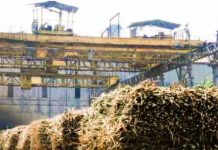EXERCISE IN FUTUROLOGY
There have been many questions and uncertainties about the sugar-alcohol universe over the last months. As expected, the sugar futures market in New York reflects these issues, closing out Friday just about at the same place where it started out – that is, a lot of talk and little action.
October/2024 closed out at 18.94 cents per pound, just four points above the previous week’s close. March/2025 closed out at 19.32 cents per pound, just 8 points above. In other words, the market fluctuated, but it was more still than water in a well.
In rounds of conversation and on WhatsApp groups, the talk of town is the damage caused by the drought and the fires. The combination of these factors should impact between 2.75% and 3.25% of the sugarcane crop – and the invisible damages, those that only time will tell, such as the effect on the plants for the next crop, are a matter of speculation. Will torrential rains in the summer be able to make up for the water deficit the plants suffered (and are still suffering)? There is no consensus – some say that the damage is done; others bet on the sky being able to fix everything as long as we get enough rain. Until then, we will keep our fingers crossed.
To express an opinion about the size of the current crop is already a guessing game which would be some hard work even for the experienced psychic. Now, trying to predict next year’s crop is like taking a guess. The numbers released by UNICA related to the accumulated crushing until the second fortnight of August show a total of 422.63 million tons of sugarcane. To make things even more complicated, over the last five crops, the total of remaining sugarcane after this date varied between 130 and 248 million tons – a rollercoaster-like variation.
Let’s suppose this crop reaches a total of 605 million tons, and that the remaining balance has an average ATR of 146.33 kg/ton (to keep the final average of the crop at 140 kg/ton). In this scenario, we would have an additional sugar production of about 12 million tons. Now, if we reduce the estimate to 590 million tons and consider an ATR of 146.89, the additional production would drop to 11 million tons of sugar. In both scenarios, we work with a mix of 47% for sugar, resulting in a minimum production of 38.22 million tons of sugar.
However, we believe that the final sugar production will be smaller than this estimate, since the deterioration of the sugarcane should be more evident in UNICA’s next report. Be warned: the reality might be surprising – and not necessarily in an agreeable way.
Keeping at our brief exercise in futurology, if we project a loss of 15% in the remaining crushing total (for the reasons already discussed) and apply this percentage on the difference between the initial prediction and the accumulated crushing up to now, we would close the crop at 578 million tons of sugarcane and a total sugar production around 37.4 million tons. We will need to monitor the next reports carefully because we might be in for a big fright.
Now, to throw a little cold water on the optimism, we have at least three strong points that counterbalance this bullish view: a) the energy market is discouraging the optimists, with WTI and Brent accumulating drops of 10% over the last 30 days, which pressure Petrobras; b) we are in an election period in Brazil, and Petrobras has margin to reduce the gas price by at least R$0.20 per liter to align itself with the international market, which can impact the ethanol market; c) the funds are selling again and now they already carry a short position of almost 20,000 lots, which also weighs on prices.
On the other hand, some factors can back up the market: the interest rate cut in the USA, expected for next week, and the possible increase in interest rates in Brazil, promoted by the Central Bank. This higher spread can attract foreign capital and appreciate the Brazilian real, which closed out Friday at R$5.5670. And when the dollar drops, the commodities get happier – and so do we.
Technical analysis: The October/2024 contract (minimum/maximum/close at 18.43/19.42/19.01 cents per pound, respectively) is testing again, but it still hasn’t been able to “close the gap” at 18.43 cents per pound, left since August 23, 2024. Despite having traded twice at the minimum of the week at 18.43 and 18.44 cents per pound, October/2024 still needs to trade below 18.43 cents per pound in order to “confirm the closing of the gap”. UNICA data, which point to a reduction of about 6% in the crushing during the second fortnight of August (to “just” 3.26 million tons), and the expectation of a “sudden death” in the crushing of the 2024/2025 crop (due to the drought and the fires), will continue to support the market. Over the short term, October/2024 finds supports at 18.98/18.79/18.43 cents per pound and resistances at 19.92 and 20.14 cents per pound. If the market drops again, going for the threshold of 18.00 cents per pound, that could be a great opportunity for the funds, industry and mills to adjust their positions (Marcelo Moreira).
Unfortunately, as of October 1st we will no longer be able to provide our weekly sugar market commentary in English for free. However, you can still access the commentary in Portuguese for free through our website, LinkedIn, or via WhatsApp and use a translator app. For those interested in continuing to receive the commentary in English, along with a monthly in-depth market analysis, we are offering a subscription service. Subscribers will receive the weekly commentary every Saturday and our exclusive monthly market insights directly to their inbox. For more information on how to subscribe, please return this message or send an email to arnaldo@archerconsulting.com.br
To read the previous episodes of World Sugar Market – Weekly Comment, click here
To get in touch with Mr. Arnaldo, write on arnaldo@archerconsulting.com.br
Continue reading Chinimandi.com for more news about the Sugar and Allied Sectors.












